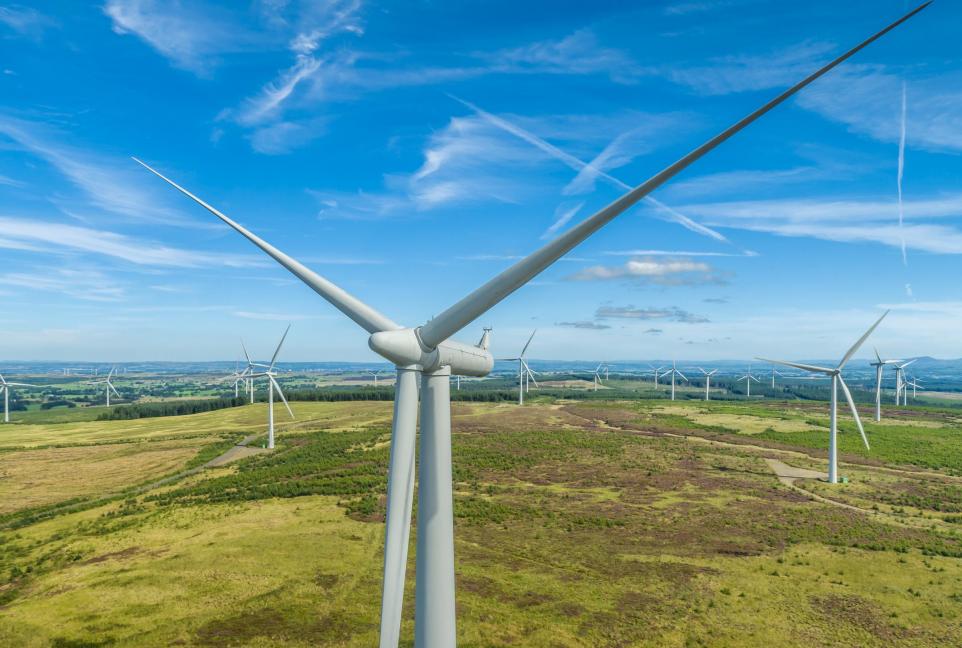
Electricity from wind farms like Whitelee near Glasgow will increasingly power the UK’s electricity network. (Image: SP Energy Networks)
The Glasgow-based company, which distributes and transmits electricity to 3.5m homes and businesses in Scotland, Merseyside, Cheshire, Wales and Shropshire, is working with Scottish universities, led by the University of Strathclyde, to develop a ‘digital twin’ of the nation’s electricity network.
This is essentially a virtual version of the electricity network, which transports electricity from where it is produced to end users, via a network of cables, wires, substations and other infrastructure.
Using artificial intelligence, engineers and scientists will be able to test scenarios on this digital twin, down to street level. For example, what would electricity supply and demand look like if an entire street switched from petrol and diesel cars to electric vehicle charging?
Called ENSIGN – standing for ENergy System dIGital twiN – the initiative is the first energy project to be funded through the Prosperity Partnerships fund of the Engineering, Physics and Sciences Research Council (EPSRC). EPSRC is the main funding body for engineering and physical sciences research in the UK. The Prosperity Partnerships scheme funds research for industry that is led by a UK-based business and delivered jointly with academic partners.
The University of Strathclyde, the University of Glasgow, Heriot-Watt University and the University of St Andrews are collaborating with SP Energy Networks on the digital twin project.
Scott Mathieson, network planning and regulation director at SP Energy Networks said: “The pace of change in the energy industry is like nothing we’ve ever seen, so it’s vital we can stress-test tech and services to identify the best solutions and ensure the network remains fit for purpose as we move towards an all-electric future.”
James Yu, head of innovation at SP Energy Networks, added: “Net zero will only be possible if we have the network infrastructure and innovative energy system to manage the increased demand from the likes of heat pumps or electric and hydrogen-powered vehicles.”
Hydrogen is a clean energy that is produced by using electricity to separate hydrogen and oxygen from water in a process called electrolysis.
Electricity demand in the UK is predicted to more than double by 2050, when the UK and other countries have pledged to meet the United Nations’ legally binding target of net zero carbon emissions.
The University of Strathclyde said achieving a net zero energy system was a “complex and challenging task” that involved integrating multiple renewable energy sources – including wind, solar, tidal, geothermal, hydrogen and electrified transport and heating – into an integrated system that was “reliable, resilient and affordable.”
Professor Campbell Booth, vice-dean of research in the Faculty of Engineering at the University of Strathclyde, said the project would create the knowledge and applications that were “urgently” needed for the “effective planning, design and operation of future energy systems.”
Twenty new research jobs will be created over the five-year duration of the project, with each of the four participating universities creating five new roles.
SP Energy Networks said the project was “trailblazing” and that once complete, its findings were expected to be rolled-out to other distribution network operators across the UK and further afield.
“The insights from this project will help shape the future of the energy system in the UK and offer the potential to transform the energy grids of countries around the world.” Mr Mathieson said.
SP Energy Networks is a subsidiary of energy company ScottishPower and operates a network of 30,000 substations and more than 110,000km of power cables.